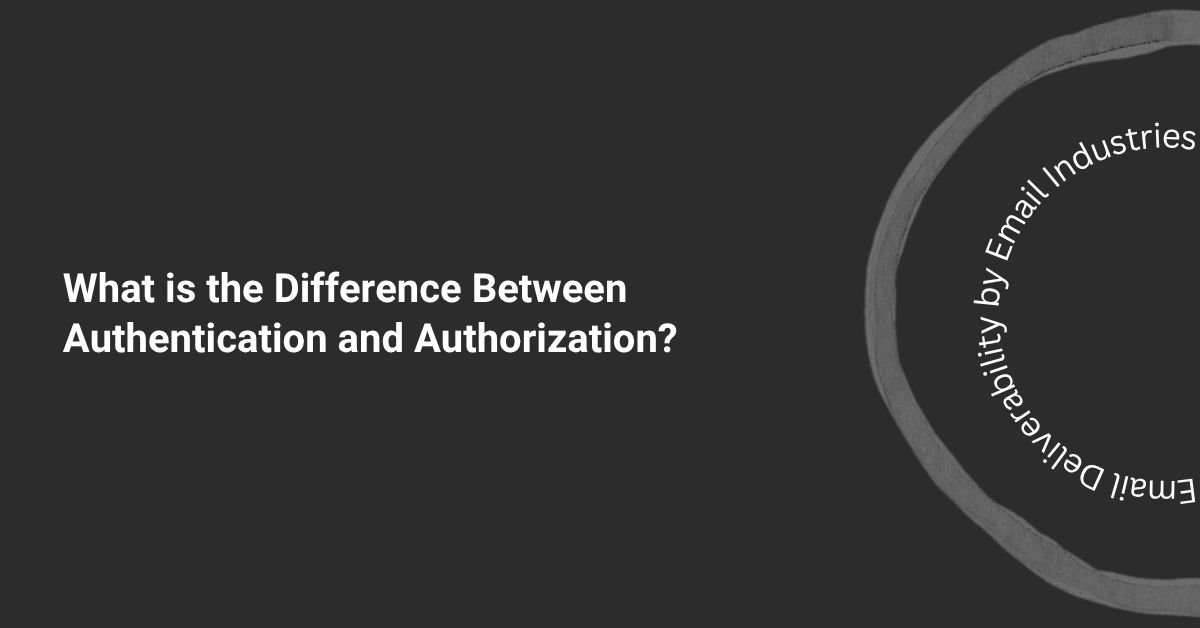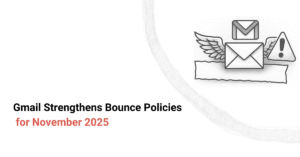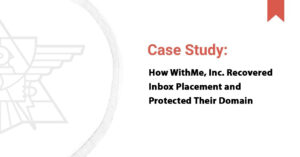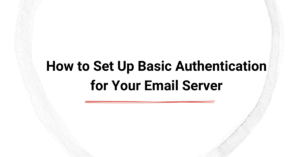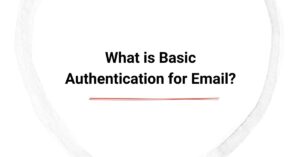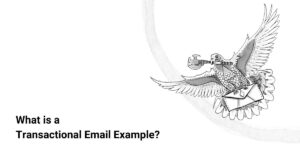In the world of cybersecurity, the terms authorization and authentication are often used interchangeably. However, they represent fundamentally unique functions that can be used together to protect organizations from cyberattacks. Therefore, understanding the distinction between authentication and authorization is crucial for securing systems effectively.
In this blog, we delve into the difference between authentication and authorization and help you find the best implementation strategies. We also provide risk scoring tools to protect against bad actors and maintain sender reputation. To learn more about access control and how to secure your system with robust authentication, it's important to understand the fundamentals of these concepts.
Summarizing the Key Points:
- Authentication verifies user identity, while authorization determines what actions an authenticated sender is allowed to perform in a network.
- Authentication precedes authorization in access control.
- Both authentication and authorization utilize similar frameworks and protocols, such as SAML and OAuth, to effectively manage permissions and user credentials.
- Authentication and user authorization play a critical role in data protection and digital security.
What is Authentication?
Authentication verifies user identity and the network. It ensures that the person or system trying to access a resource is who they claim to be. This is the first step in securing systems, as it confirms the legitimacy of the user or device attempting to gain access. By verifying user identity, organizations can prevent unauthorized access and potential security breaches. Common examples of authentication techniques include:
- Passwords: Users provide a secret word or phrase to gain access. This is the most common form of user authentication.
- Biometrics: This authentication system uses biometric information like fingerprints or facial recognition to grant access.
- Multi-Factor Authentication (MFA): This involves combining two authentication factors, such as a password and a fingerprint, for maximum security.
What is Authorization?
The authorization process determines user access and actions. It delivers access control based on predefined permissions or roles. This way, users can only perform actions they are allowed to. The primary purpose of authorization permission is to enforce policies dictating what authenticated users can do within a system. Thus preventing users from accessing or modifying resources beyond their control access. Common examples of user authorization include:
- Accessing Specific Folders: A user may have permission to view specific folders within a system.
- Editing Documents: Some authorized users might have the ability to edit documents, while others can only view them.
- Viewing Sensitive Information: Authorization controls who can access sensitive data within an organization.
Key Differences Between Authentication and Authorization
While both authentication and authorization are vital for security, they differ in purpose, sequence, and the data they involve.
Purpose and Function
Authentication verifies the identity of the user or system while authorization controls access rights. In simple terms, the former confirms who someone is, while the latter decides what actions that person can perform within a secure system.
Sequence in Access Control
Authentication comes before authorization in the security process. A system determines user identity before determining their access rights. The authorization process only initiates once the user's identity has been verified.
Data and Permissions
Authentication factors include user credentials, such as passwords, biometrics, or security tokens. On the other hand, the authorization process involves access rights or policies tied to user roles or identities, specifying what resources or actions are permitted based on user permissions.
How Authentication and Authorization Work Together
Authentication and authorization are closely linked and they work together to secure systems and data. Here is an overview of the workflow:
The Process Flow
- First: A user logs in by providing their secure credentials (authentication).
- Next: The system verifies these credentials and, upon success, checks the user's permissions (authorization).
- Finally: Authentication and authorization collaborate to ensure only authorized users gain access to specific resources based on access tokens.
Example Use Cases
Example 1: In a Software-as-a-Service (SaaS) application or website, a user logs in with their unique username and password (authentication). Depending on the role, such as admin, editor, or viewer, they get secure access to specific reports, files, or features (authorization).
Example 2: An employee swipes their badge to enter a building (authentication). Based on their clearance level, they can access certain floors or rooms (authorization).
Common Authentication Methods
An organization can employ various authentication processes to validate user identity, restrict access management, and prevent data breaches.
Password-Based Authentication
This is the traditional authentication process requiring users to provide a unique identifier such as a username along with a corresponding password or PIN (Personal Identification Number). The system then verifies these credentials against stored data to confirm user identity.
Despite its widespread use, password-based authentication is susceptible to several vulnerabilities. Users often create weak or easily guessable passwords, making them targets for phishing and brute-force attacks. Additionally, password reuse across multiple platforms can lead to widespread security breaches.
Multi-Factor Authentication (MFA)
MFA improves security by allowing users to present two or more verification factors before granting access. These factors include:
- Something you know: A password, PIN, or security question.
- Something you have: A hardware device like a smartphone or security token.
- Something you are: Biometric data such as fingerprints or facial recognition.
The primary advantage of multi-factor authentication is enhanced security. Even if one factor (e.g., a password) is compromised, unauthorized access is unlikely without the additional factors. This layered approach makes it more challenging for attackers to breach your system.
Biometric Authentication
This method utilizes unique physical characteristics of individuals to verify their identity. Common biometric modalities include:
- Fingerprints: Scanning the unique patterns on a user's fingertips.
- Facial Recognition: Analyzing facial features to confirm user identity.
- Retina or Iris Scans: Examining the unique patterns in the eye for user authentication.
Biometric authentication is commonly used in high-security environments and personal devices. For instance, smartphones often employ fingerprint sensors or facial recognition to unlock devices, providing both security and convenience.
Common Authorization Methods
An organization can employ several methods to implement and manage access control. Here is an overview of the common authorization methods for reference:
Role-Based Access Control (RBAC)
RBAC assigns permissions based on predefined roles within an organization. Each role enjoys specific access rights, and is assigned to users according to their responsibilities. The most common roles include:
- Admin: Full access to all system functionalities.
- Editor: Can modify content but lacks administrative privileges.
- Viewer: Can only view content without modification rights.
This structured approach simplifies permission management and ensures that users have appropriate access levels. RBAC is commonly used for database security, cloud resource management, application security processes, and compliance and auditing.
Attribute-Based Access Control (ABAC)
ABAC, also known as policy-based access control, grants access based on user attributes, resource characteristics, and environmental conditions. Attributes can include:
- User Attributes: Department, job title, or clearance level.
- Resource Attributes: Sensitivity level or data classification.
- Environmental Attributes: Time of access or location.
ABAC is ideal for dynamic environments with complex access requirements. For example, a user might have access to certain data only during business hours and from specific locations, enhancing the overall security and compliance.
Policy-Based Authorization
This authorization method involves granting access based on predefined policies or rules that consider various factors, such as user roles, attributes, and contextual information. Policies are often written in a declarative language, allowing for flexible and dynamic access control decisions.
Policy-based authorization is suitable for applications requiring granular access control. For example, dynamic access control based on location and time, managing delegated administrative roles, fine-grained API authorization, and access control for applications.
Importance of Authentication and Authorization in Security
Authentication and authorization are foundational components of a robust network security framework. Here is how they collaborate to improve the overall security system of your organization.
Providing Secure Access
Authentication confirms that individual users are who they claim to be before granting access. Authorization, on the other hand, determines what authenticated users are permitted to do. Together, they limit access and actions within a system, safeguarding sensitive resources and preventing data breaches.
Enhancing User Experience
When effectively implemented, authentication and authorization systems streamline user access without compromising security. For example, single sign-on (SSO) solutions allow users to authenticate once and gain access to multiple applications. This isn't just convenient but also helps maintain secure access controls.
Reducing Security Risks
By combining authentication and authorization mechanisms, you can mitigate security risks such as data breaches and insider threats. This way, organizations can protect their assets and stay compliant with all data regulatory requirements.
Common Challenges and How to Overcome Them
While authentication and authorization are essential for security, organizations often face challenges in implementing them effectively. Here are the three most common hurdles and how you can overcome them.
Weak Authentication Practices
Poor password management and the lack of multi-factor authentication (MFA) make systems vulnerable to cyberattacks. You should consider enforcing strict password protection policies and implementing multi-factor authentication for better results.
Over-Permissioned Users
Granting users more access than necessary increases the risk of data breaches. The principle of least privilege (PoLP) makes sure users only have the minimum access required for their roles. You should audit user authorization levels regularly and remove unnecessary permissions to minimize security risks.
Misaligned Systems
Organizations often struggle with authentication and authorization systems that are not properly integrated. Thus, causing inefficiencies, security loopholes, and inconsistent access control across platforms. You should consider implementing a centralized identity and access management (IAM) system. This helps reduce manual errors and improve overall security.
Boost Your Email Outreach and ROI Today
An effective security plan requires protecting your systems from data breaches without breaking the bank. Authentication and authorization can help you meet these goals and protect your business over time. At Email Industries, we specialize in optimizing your email marketing infrastructure, so you can reach your goals in record time. Book a discovery call today to learn how you can authenticate and authorize your systems with expert guidance.

